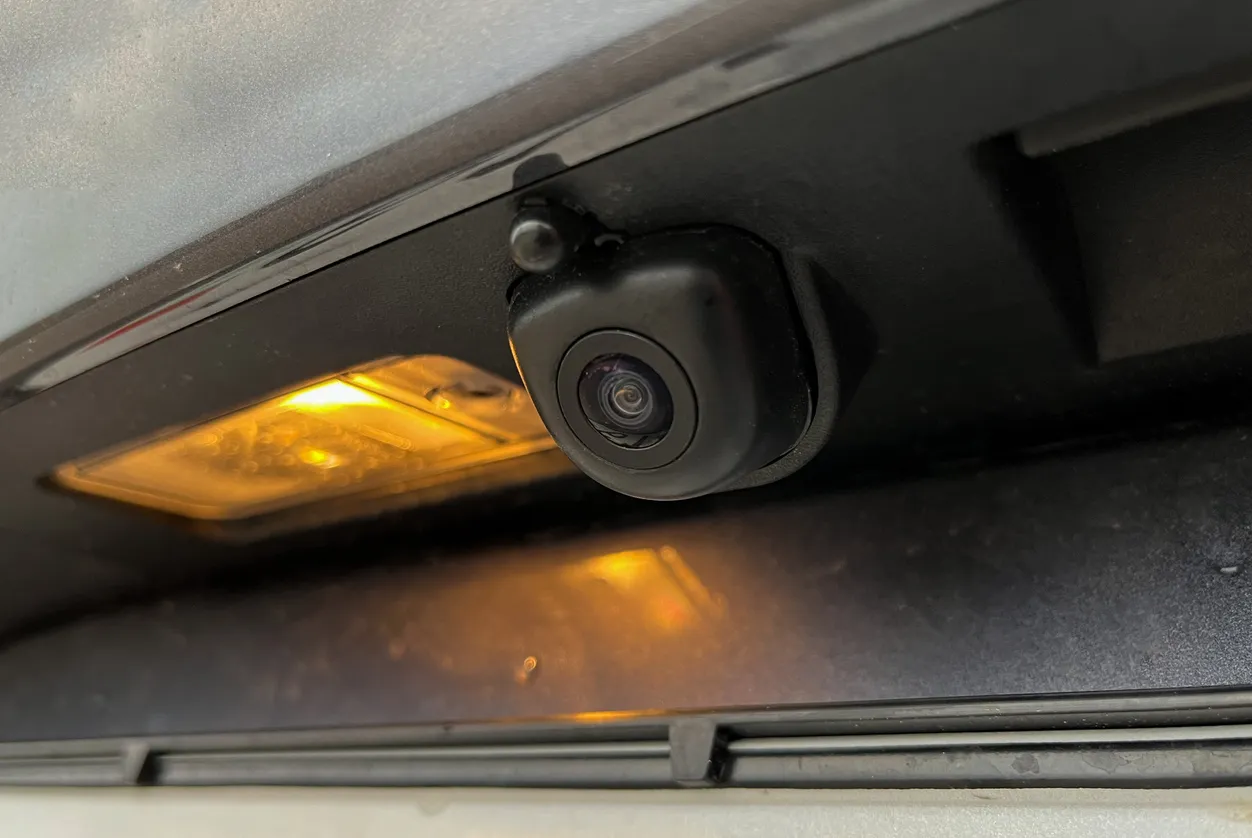Backup cameras have become essential in enhancing vehicle safety. They help minimize the chances of accidents. As technology continues to evolve, modern backup cameras now offer more advanced features and improved image quality.
In this blog, we’ll explore the main features you should consider when purchasing a backup camera for your vehicle. We’ll also highlight the top five backup cameras available and answer common questions you may have before making a decision.
When selecting a backup camera, it’s important to take the following aspects into account:
You’ll need to look for a camera that has a high resolution and night vision settings. High resolution will provide you with a clear image. Night vision will adjust your visibility in low-light conditions.
If you have a large vehicle or often park in tight spaces, pay close attention to this point. A wider field of view will help you have better visibility behind your vehicle. Cameras that can make objects appear farther away or closer than they are cameras with excessive lens distortion.
There are two types of cameras: wireless and wired. Wireless cameras use radio frequency to work. They are easier to install but their signal can be weakened by different factors such as other electronic devices or environmental issues.
Wired cameras require you to physically connect them to your vehicle’s electrical system. They have a stable connection but are harder to install.
Ensure that the camera is specific to your vehicle’s model. This will help integrate it into your vehicle’s system much easier.
If your car has a built-in display or a head unit that can accommodate the camera’s video screen. Some cameras need additional adapters and wiring.
Look for backup cameras that are made with high-quality materials such as True CMOS and Name Brand. Make sure they have a IP67 or better rating. This will ensure you have a reliable product that will have a long lifespan and good performance.
Depending on the features, the brand, and the quality, think about the range that’s within your budget. Remember that you want to make a long-term investment, so choose a backup camera that will serve you well in the long run.
Some backup cameras have motion detection, parking guides, recording abilities, smartphone integration, and other features.
Depending on what you need, consider these features to make your overall driving and parking experience much more convenient. We’ve looked at the five most popular backup cameras for you.
1. Kenwood CMOS-130 – Universal Rear View Camera
Key Features: ¼-inch color CMOS sensor, 380,000 pixels, NTSC video signal out.
Pros: Wide-angle view, waterproof design, affordable, flexible mount.
Cons: Lower resolution, basic features, NTSC-only output.
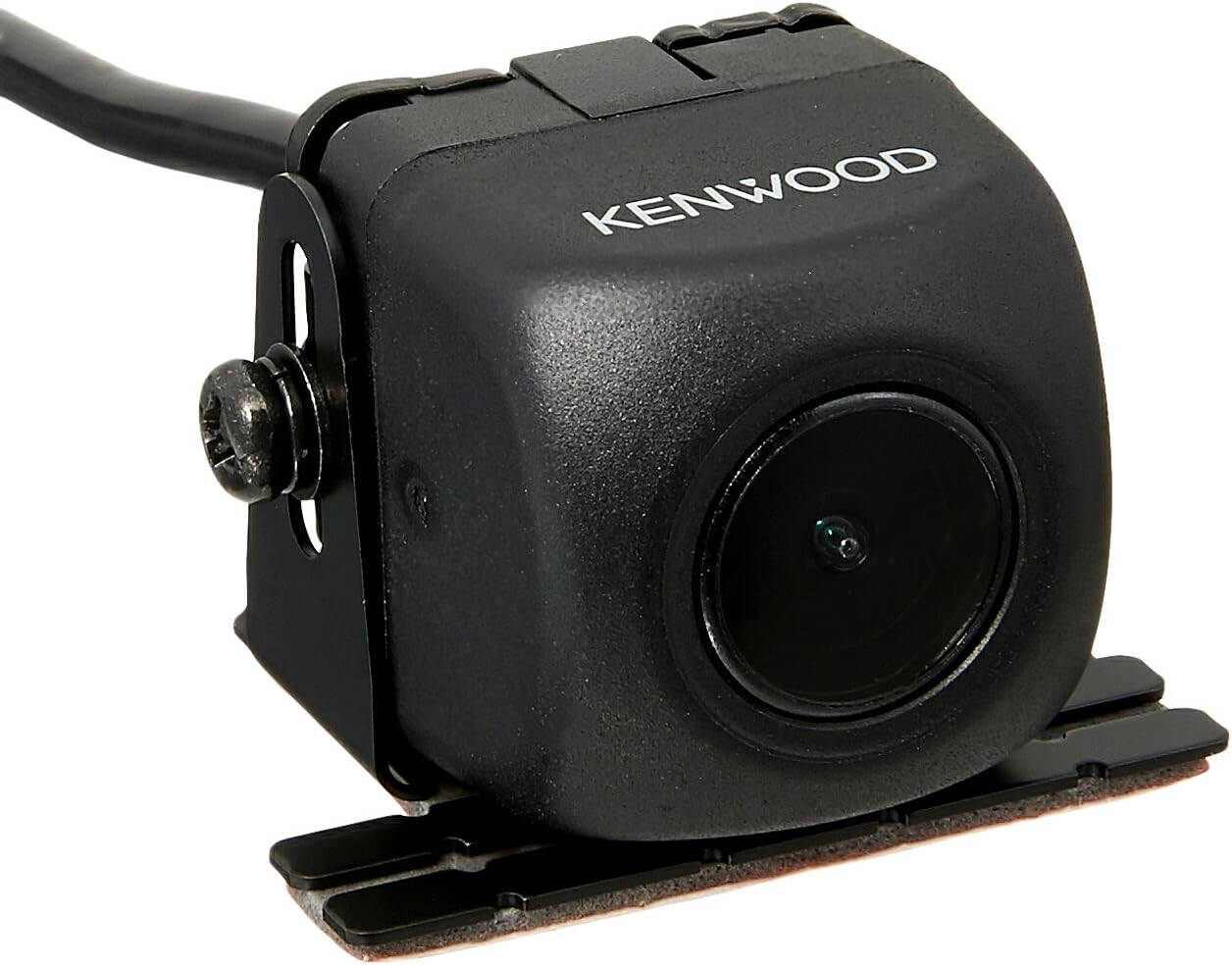
This camera unit offers a wide-angle mirror view image, utilizing a 1/4-inch colour CMOS sensor with approximately 380,000 effective pixels. It is designed to output video in NTSC format via RCA, providing clear visuals with a wide field of view.
The unit is housed in a waterproof chassis with an IP67 rating, ensuring reliable performance even in harsh weather conditions. A flexible mount base allows for versatile installation, specifically at the rear of the vehicle, and the unit is also equipped with high voltage protection for added durability.
The camera features high sensitivity pixels and delivers a wide-angle mirror image as its output. It supports a focal length of f = 1.12mm with an F value of 2.2, enabling a horizontal field of view of ±129° and a vertical field of view of ±104°.
The illumination range spans approximately 0.9 to 100,000 lux, supported by an electronic iris system and automatic white balance to adapt to varying lighting environments.
The scanning system is interlaced, with internal synchronization. The video output level is 1Vpp at 75Ω, and the signal format remains consistent with NTSC in mirror view mode. The integrated connection cable for DC power and video measures 0.7 meters in length.
In terms of general specifications, the unit operates at a standard voltage of 14.4V, with an allowable range between 9V and 16V. It consumes a maximum current of 0.06A.
The camera’s dimensions are compact at 23.4 x 23.4 x 23.9 mm (W x H x D), and it has a lightweight build of just 21 grams. Instruction manuals are included in multiple languages: English, French, German, Dutch, Italian, Spanish, and Portuguese.
Included accessories comprise a mounting bracket, one Parker-type screw (Ø 2.5 x 10mm), and a grommet for secure installation.
The unit’s core features—wide-angle mirror view image, 1/4-inch colour CMOS sensor, 380,000 pixels, NTSC video signal output, waterproofing to IP67 standards, and a flexible mounting base—make it a robust and versatile choice for rearview camera applications.
Also Read: 10 Best First Cars for New Drivers and 5 to Avoid
2. Kenwood CMOS-230 – Rear View CMOS Camera
Key Features: ⅓.6” color CMOS sensor, 330,000 pixels, compatible with RCA video input.
Pros: Built-in power supply, 128-degree horizontal and 103-degree vertical view, waterproof unit, wide-angle mirror image, includes cable harness and mounting bracket.
Cons: Lower resolution, limited compatibility, basic features.
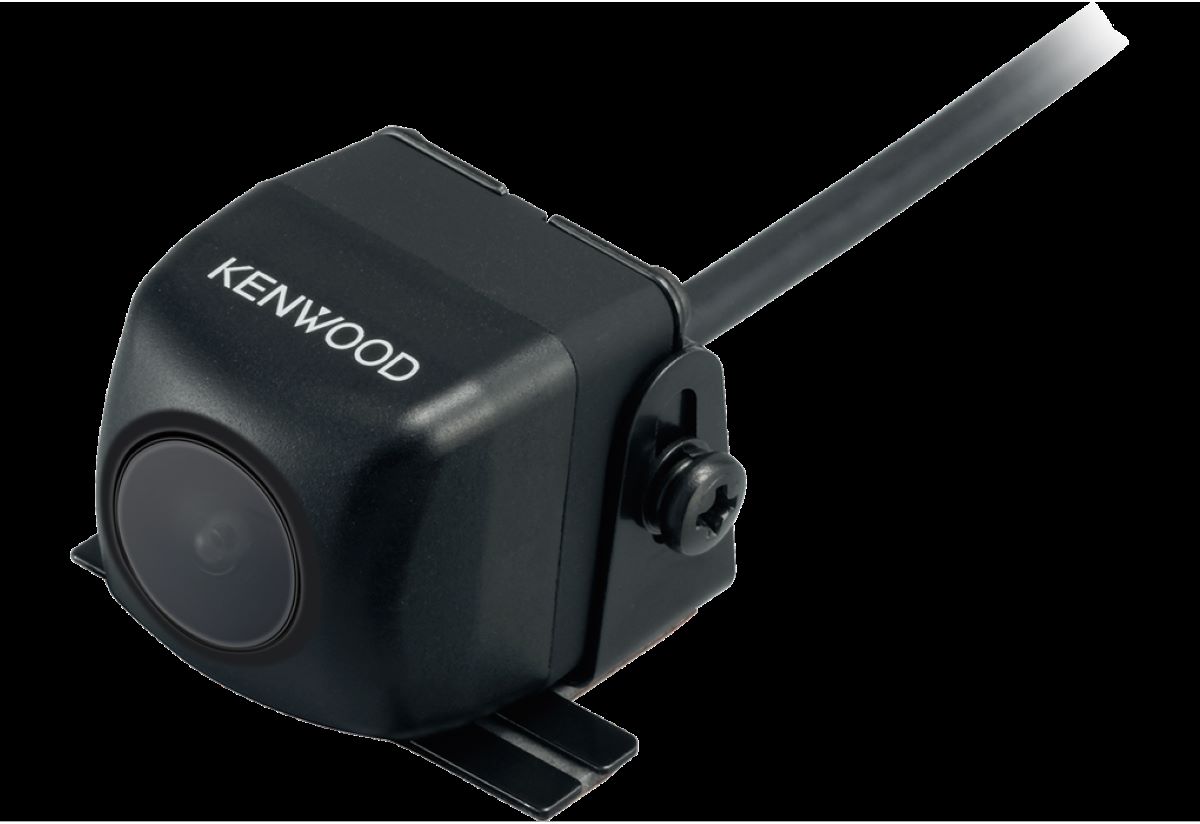
Kenwood’s CMOS-230 backup camera is impressively small—measuring less than a cubic inch—making it an excellent fit for installation on the rear of nearly any vehicle. Once the camera is installed, shifting into reverse activates the view on your receiver’s video screen, allowing you to clearly see what’s behind you.
The camera offers a 128-degree horizontal viewing angle and a 103-degree vertical angle, providing a broad perspective that’s especially useful when backing up a larger vehicle or maneuvering while towing.
The CMOS-230 includes a 24-foot cable and harness assembly, which is generally long enough for most vehicle setups. It comes equipped with a composite video connector, ensuring compatibility with almost any video receiver. A mounting bracket is included with the camera, making installation more convenient.
If you’re considering installing this camera yourself, there are a few important things to know. Unless otherwise noted, a backup camera is only designed for use while reversing your vehicle. “If you require a front-view or constant rear-view camera, check for that capability.”
You’ll need specific tools and supplies for a proper installation, including a panel tool, a wire cutter/stripper, a soldering iron, and rosin-core solder with heat shrink tubing, in addition to any tools needed to remove the radio from the dashboard.
Wiring requirements can differ between camera models. Some units must be powered near the radio, while others allow you to connect the power to compatible reverse lights.
Regardless of the model, all installations require power and ground wiring for the camera, connection of the camera’s video output to the monitor or radio, and linking the monitor or radio to a reverse trigger in the vehicle. “Some radio replacement interfaces supply a reverse trigger wire for the radio — using that wire to power your camera will damage the interface.”
As for the video cable, it must be routed from the exterior mounting location of the camera into the cabin and then up to the dash. This may involve drilling a small hole or filing down metal or plastic components to accommodate the cable.
Keep in mind that the route won’t be direct, so it’s important to estimate the total cable length required accurately. Each camera’s cable length is provided in its specifications.
The product highlights of the CMOS-230 include a waterproof CMOS backup camera with 128-degree horizontal and 103-degree vertical viewing angles, 330,000 pixels, and compatibility with any radio that has an RCA video input—most aftermarket models, and only a few factory models.
The dimensions are 15/16″ wide by 15/16″ high by 15/16″ deep. It features a built-in power supply, comes with a 24-foot cable harness, and includes a mounting bracket. The product is backed by a one-year warranty.
3. Kenwood CMOS-320 – Universal Multi View Camera
Key Features: Multi-view camera, NTSC video signal out, front or rear installation, flexible mount base, switch unit included.
Pros: Advanced image processor, touchscreen control, provides various views, waterproof unit.
Cons: Pricey, needs a compatible receiver, complexity regarding setup and configuration.
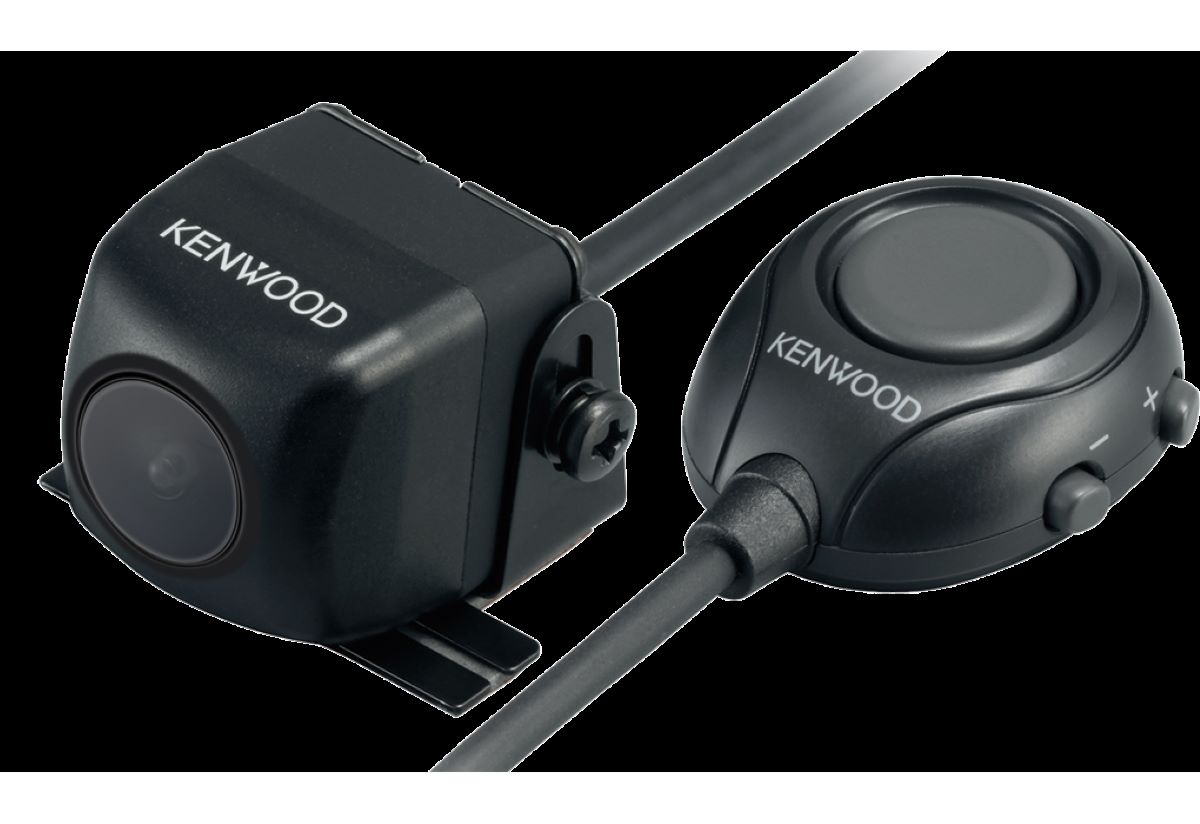
The CMOS-320 multi-view camera features an advanced image processor capable of modifying viewing angles to suit various driving and parking needs.
These viewing options include super wide view, overhead view, PinP (Picture-in-Picture) view, corner view, and the ability to add graphic guidelines to the camera image, enhancing overall visibility and spatial awareness.
The camera is equipped with a high-quality lens paired with a sensitive CMOS sensor, which together deliver a clear and sharp image—even in low-light environments such as nighttime settings or dimly lit parking garages.
Users can effortlessly switch between the available viewing modes using the touchscreen interface of a compatible KENWOOD AV-receiver.
4. Hertz HM CAM C01
Key Features: Wired rearview camera, compact design, DC 12V-24V power supply, CMOS sensor, night vision.
Pros: Wide viewing angle, waterproof, low power consumption, wide compatibility.
Cons: Needs physical wiring, has basic features, lower resolution.
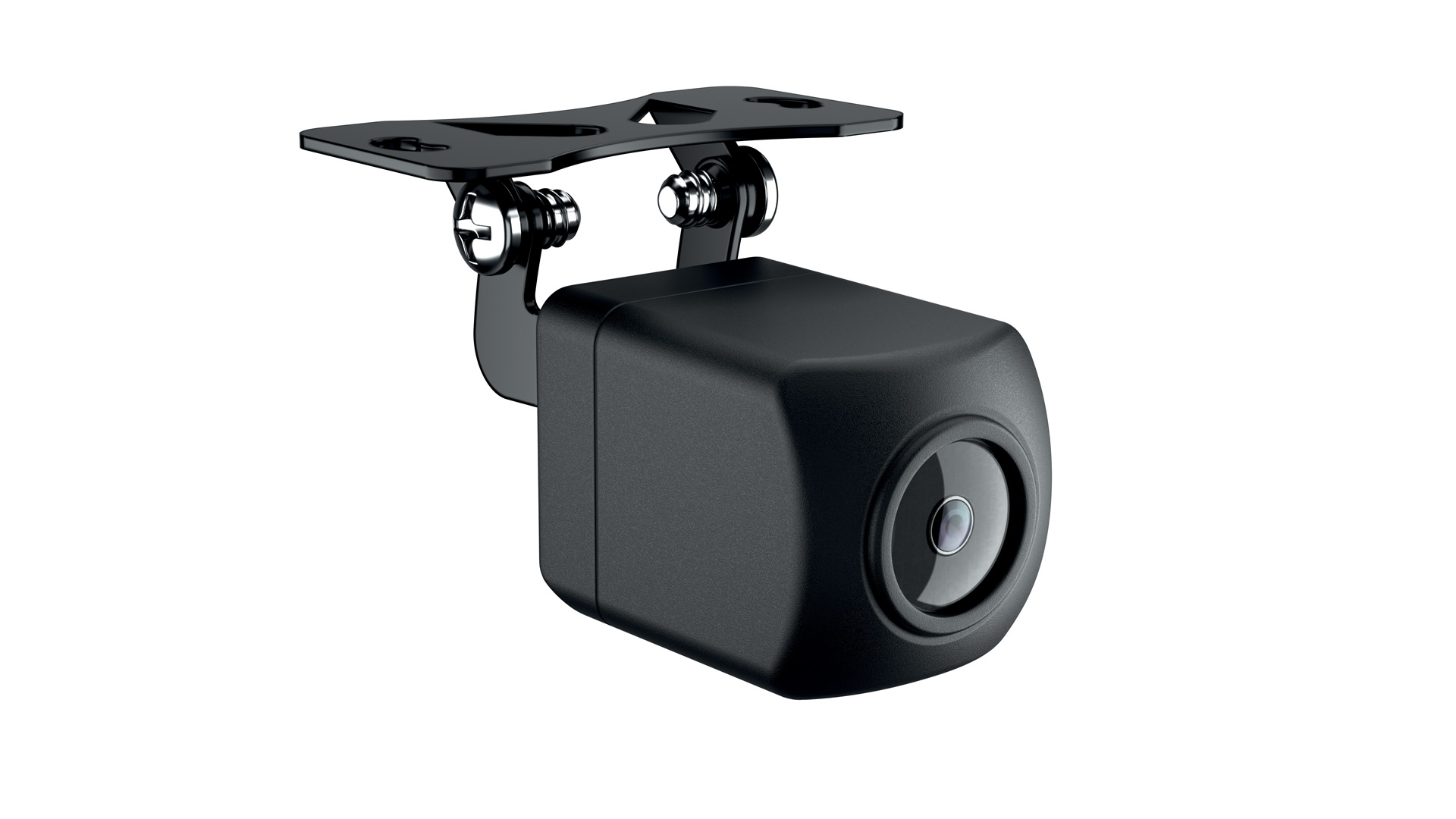
Hertz designed their compact HM CAM C01 camera to endure tough conditions on both land and sea. This small, stealth-style camera measures just 1-1/2 inches in height by 1-1/4 inches in width and is only 1-3/4 inches deep, allowing it to fit virtually anywhere—on a boat, car, camper, or truck.
It records in up to 720p resolution and offers a wide 120º horizontal viewing angle. With an IP67 rating, the camera is highly resistant to dust and moisture, making it suitable for harsh environments.
The HM CAM C01 camera is capable of delivering a clear image even in very dark settings. Its parking line display is especially helpful when backing into a parking space or docking at a marina. This camera is compatible with any device that features a composite video (RCA) input, including car stereos and chartplotters.
This marine bracket camera features a color CMOS sensor and selectable reverse image functionality. It includes parking lines for more accurate parking or docking assistance. The unit is compatible with any device equipped with an RCA video input, such as chartplotters, control panels, and car stereos.
A universal mounting bracket, as well as power, audio, and video cables, are included. The camera provides a viewing angle of 120° horizontally and 90° vertically. With a waterproof IP67 rating, it offers durability in various environments.
The minimum illumination required is just 0.1 lux. It records at a resolution of 720p (1280 x 720 pixels) at 30 frames per second. The dimensions are 1.22 inches high, 1.58 inches wide, and 1.74 inches deep. The product comes with a one-year warranty.
5. Hertz HM CAM W01
Key Features: Simple design, wireless backup camera, user-friendly application, high-resolution video format.
Pros: Waterproof, night vision, wide viewing angle, high-quality video, wide temperature range.
Cons: Battery life, compatible app needed, wireless connection.

The HM CAM delivers high-definition recording with a resolution of up to 720p at 30 frames per second, offering an ultra-wide shooting angle of 120º horizontally and 90° vertically.
This wide field of view makes it suitable for capturing large areas with clarity. Control and configuration of the camera are made simple through the advanced Wi-Fi control app, which is available for both iOS and Android devices.
In terms of general specifications, the camera is powered by a DC supply ranging from 12V to 24V, with a maximum power consumption of 2 watts. It utilizes a CMOS-type camera sensor and provides a vertical viewing angle of 90° and a horizontal angle of 120º.
For night use, the camera supports a night sight distance ranging from 4 to 10 meters and requires a minimum illumination of just 0.1 lux. It transmits data wirelessly using a 2.4GHz signal at 56Mbps via the 802.11g standard, with an effective transmission distance of up to 30 meters.
The unit holds an IP67 rating, indicating strong protection against dust and water. It operates effectively in a wide temperature range from -10ºC to +75ºC (14ºF to 167ºF), making it durable in various environmental conditions.
System requirements include iOS 11 or higher and Android 6 or higher. The camera uses H.264 video compression to maintain quality while reducing file size.
Its video resolution is 720p (1280 x 720 pixels) at a consistent frame rate of 30 fps. It features 0.92 effective megapixels. The physical dimensions are 23 x 23 x 33 millimeters, or approximately 0.03 x 0.03 x 1.29 inches, and the total weight, including the cable, is 0.086 kilograms or 0.189 pounds.
Also Read: 10 Top-Rated Hatchbacks That Drivers Enjoy Driving

